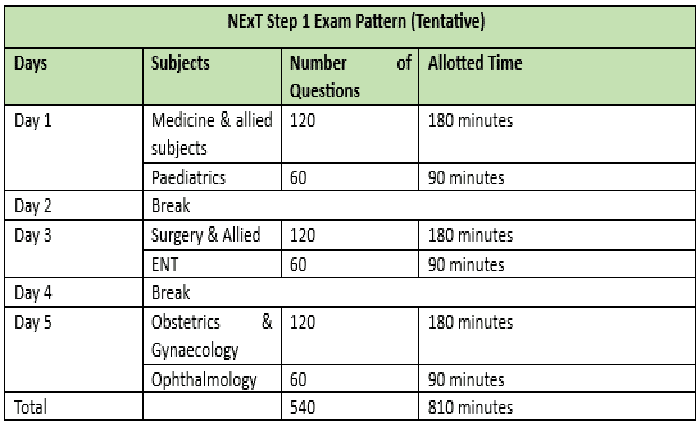Next Exam Pattern: A Comprehensive Guide

Introduction
The “next exam pattern” is a topic of significant interest among students, educators, and academic institutions. With education systems evolving rapidly, understanding these changes is crucial for success. In this comprehensive guide, we will delve into the nuances of the next exam pattern, exploring its components, benefits, and strategies to excel.
The Evolution of Exam Patterns
The next exam pattern signifies a shift from traditional assessment methods to more holistic and inclusive approaches. This evolution is driven by the need to better evaluate a student’s understanding, skills, and application of knowledge. Traditional exams often focused on rote memorization, whereas the next exam pattern aims to assess critical thinking, problem-solving abilities, and real-world application.
In the next exam pattern, there is a noticeable shift towards project-based assessments, open-book exams, and continuous evaluations. These methods are designed to encourage deep learning and reduce the stress associated with high-stakes testing. By understanding the next exam pattern, students can better prepare themselves for the diverse ways they will be evaluated.
Components of the Next Exam Pattern
Understanding the components of the next exam pattern is essential for effective preparation. These components include multiple-choice questions (MCQs), subjective questions, practical assessments, and project-based evaluations. Each component is designed to assess different skills and competencies.
MCQs in the next exam pattern are crafted to test analytical and critical thinking skills. Subjective questions require students to articulate their thoughts and demonstrate their understanding in a detailed manner. Practical assessments and project-based evaluations focus on applying theoretical knowledge to real-world scenarios, reflecting the shift towards skill-based learning.
Benefits of the Next Exam Pattern
The next exam pattern offers numerous benefits, including a more comprehensive evaluation of a student’s abilities. This pattern encourages continuous learning and reduces the pressure of one-time assessments. By incorporating diverse assessment methods, it caters to different learning styles and strengths.
Students benefit from the next exam pattern as it promotes a deeper understanding of subjects. It also helps in developing essential skills like time management, critical thinking, and problem-solving. For educators, this pattern provides a more accurate measure of a student’s overall performance and growth.
Preparing for the Next Exam Pattern
Preparation for the next exam pattern requires a strategic approach. Students should familiarize themselves with the various components and focus on developing a well-rounded skill set. Effective study habits, regular practice, and seeking feedback are crucial for success.
Utilizing a variety of resources, including textbooks, online courses, and practice tests, can help students adapt to the next exam pattern. Time management and the ability to prioritize tasks are essential skills that will aid in efficient preparation. Staying updated with any changes or updates in the exam pattern is also vital.
Strategies to Excel in the Next Exam Pattern
To excel in the next exam pattern, students must adopt effective strategies. Active learning techniques, such as group discussions, case studies, and hands-on projects, can enhance understanding and retention of knowledge. Regular self-assessment and mock tests can help identify areas of improvement.
In the next exam pattern, critical thinking and problem-solving skills are paramount. Practicing these skills through puzzles, analytical exercises, and real-world problem scenarios can be beneficial. Additionally, maintaining a healthy study-life balance and managing stress through relaxation techniques can contribute to better performance.
Role of Technology in the Next Exam Pattern
Technology plays a significant role in the next exam pattern. Digital tools and platforms facilitate diverse and interactive learning experiences. Online assessments, virtual labs, and e-learning resources are integral components of the modern exam pattern.
The next exam pattern leverages technology to provide personalized learning experiences. Adaptive learning platforms can tailor content to individual student needs, enhancing their understanding and performance. Moreover, technology enables remote assessments, making education more accessible and flexible.
Challenges and Solutions in Adapting to the Next Exam Pattern
Adapting to the next exam pattern comes with its own set of challenges. Students may struggle with unfamiliar assessment methods, while educators might find it challenging to design and implement diverse evaluation techniques. However, these challenges can be mitigated with the right strategies.
For students, understanding the next exam pattern and regular practice can ease the transition. Educators can benefit from professional development and collaboration to effectively incorporate new assessment methods. Institutions should provide support and resources to facilitate this shift smoothly.
The Future of Exams: Trends and Predictions
The next exam pattern is part of a broader trend towards more holistic and inclusive education systems. Future exam patterns are likely to emphasize continuous evaluation, personalized learning, and real-world applications even more. This shift reflects the changing demands of the workforce and society.
In the future, the next exam pattern may evolve to include more AI-driven assessments, gamified learning experiences, and interdisciplinary evaluations. These trends aim to create a more engaging and effective educational environment, preparing students for the complexities of the modern world.
Case Studies: Success Stories of Implementing the Next Exam Pattern
Several educational institutions have successfully implemented the next exam pattern, showcasing its benefits and effectiveness. These case studies provide valuable insights into best practices and innovative approaches to assessment.
For example, a leading university transitioned to project-based assessments and saw significant improvements in student engagement and performance. Another institution integrated technology-driven assessments, providing personalized learning experiences that enhanced student outcomes. These success stories highlight the potential of the next exam pattern to transform education.
Tips for Educators to Adapt to the Next Exam Pattern
Educators play a crucial role in the successful implementation of the next exam pattern. To adapt effectively, they should stay updated with the latest trends and best practices in assessment. Professional development and continuous learning are essential for educators to design and deliver effective assessments.
Collaboration with peers and sharing of resources can help educators navigate the challenges of the next exam pattern. Incorporating student feedback and being flexible in approach can also enhance the effectiveness of the new assessment methods. By embracing these strategies, educators can ensure that they are well-equipped to guide their students through the next exam pattern.
Conclusion
The next exam pattern represents a significant shift in how educational assessments are designed and implemented. By understanding its components, benefits, and challenges, students and educators can better prepare for and adapt to these changes. Embracing the next exam pattern can lead to a more holistic, engaging, and effective educational experience, ultimately benefiting both learners and the broader educational community.
FAQs
- What is the next exam pattern?
- The next exam pattern refers to the evolving methods of assessment that focus on holistic evaluation, including project-based assessments, open-book exams, and continuous evaluations.
- How can students prepare for the next exam pattern?
- Students can prepare by developing effective study habits, practicing regularly, seeking feedback, and utilizing various resources like textbooks, online courses, and practice tests.
- What are the benefits of the next exam pattern?
- Benefits include a comprehensive evaluation of abilities, reduced pressure of one-time assessments, promotion of deeper understanding, and development of essential skills.
- How does technology influence the next exam pattern?
- Technology enhances the next exam pattern through digital tools, online assessments, virtual labs, and personalized learning platforms, making education more interactive and accessible.
- What challenges might arise with the next exam pattern?
- Challenges include adapting to unfamiliar assessment methods for students and designing diverse evaluation techniques for educators. These can be mitigated through practice, professional development, and institutional support.




